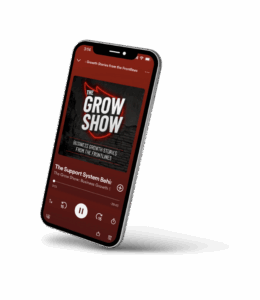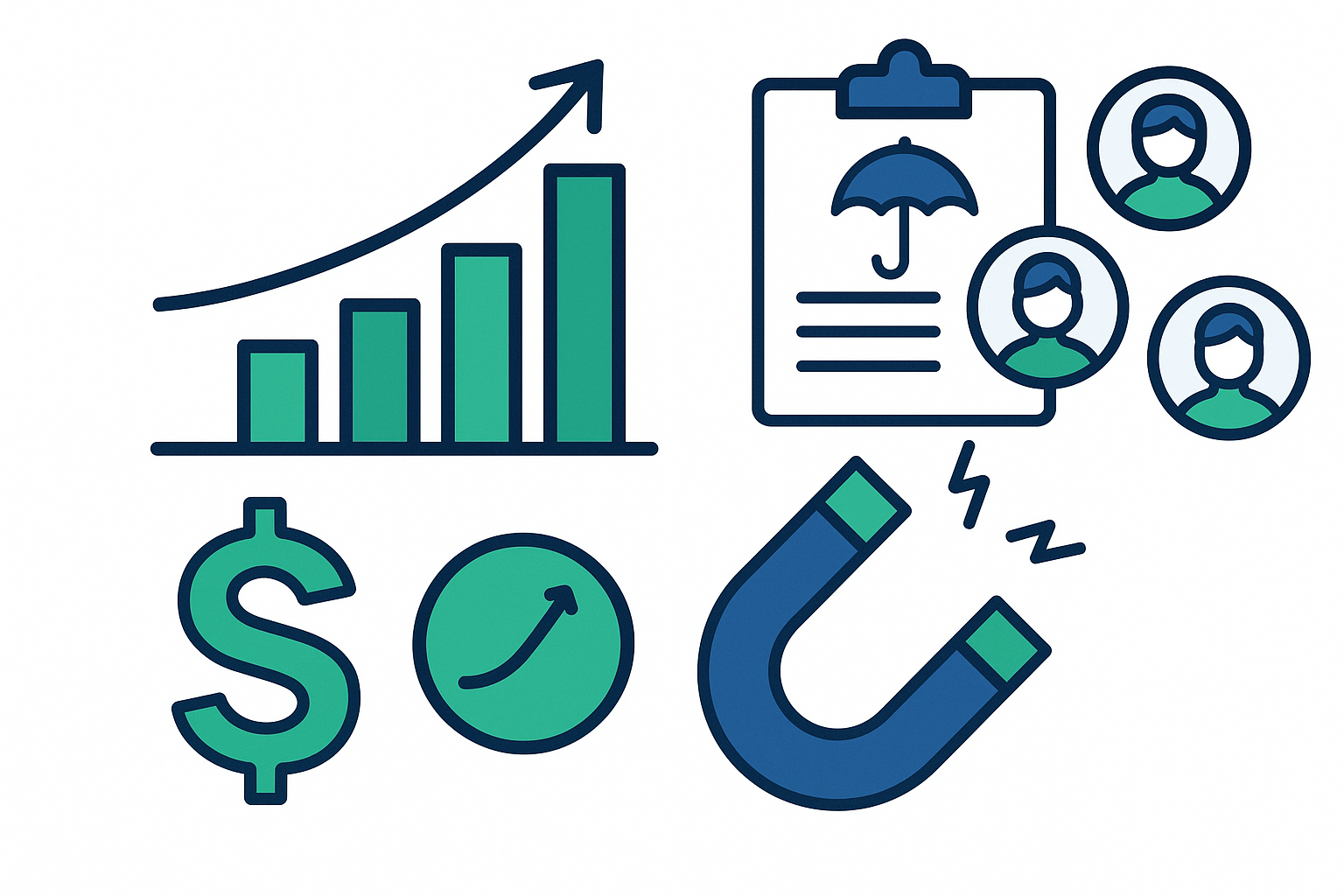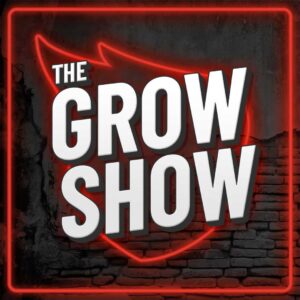Insurance marketing has evolved. Cold outreach and generic ad campaigns no longer yield consistent results. To stay competitive, insurance companies must shift from reactive selling to proactive demand generation. That means building systems that attract, educate, and convert leads long before they speak to a sales rep.
This guide covers how to build a predictable pipeline using a modern demand generation strategy tailored specifically for insurance companies. We’ll break down high-performing tactics like webinars, gated content, lead calculators, and automated nurture flows — all working together to generate high-quality leads at scale.
Contents
- 1 What Is Demand Generation in the Insurance Industry?
- 2 Core Pillars of Demand Generation for Insurance Firms
- 3 Tools That Power Predictable Demand Generation
- 4 Aligning Sales and Marketing for Maximum Impact
- 5 Paid and Organic Promotion Tactics
- 6 Measuring and Improving Campaign Performance
- 7 Building Long-Term Value With Demand Generation
- 8 Final Thoughts: Build a Demand Engine That Works While You Sleep
What Is Demand Generation in the Insurance Industry?
Demand generation refers to the full-funnel marketing strategy that creates awareness and interest in your insurance products before someone is ready to buy. It combines brand awareness, lead capture, and nurturing tactics to educate prospects and move them toward a sales conversation.
Unlike lead generation, which focuses on capturing leads already in-market, demand generation targets a broader audience and influences their buying journey over time.
Why Demand Generation Works for Insurance Companies
- Insurance is complex and relationship-driven
- Buyers need education before making decisions
- Many prospects are unaware of coverage gaps
- Timely follow-up is essential in a long sales cycle
With the right demand generation program, you can:
- Build awareness for multiple policy types
- Segment and educate prospects based on interest
- Drive consistent inbound leads
- Enable your producers to focus on sales-ready conversations
Core Pillars of Demand Generation for Insurance Firms
1. Value-Driven Content Strategy
The foundation of demand generation is high-value content. Educational resources like whitepapers, guides, and blogs help your audience understand their risks, coverage options, and potential savings — all while positioning your agency as a trusted expert.
Content Ideas for Insurance Firms:
- “The Ultimate Guide to Group Health Benefits for Small Businesses”
- “What Commercial Auto Insurance Actually Covers”
- “How to Compare Life Insurance Policies by Age and Income”
- “Cyber Liability 101 for Local Law Firms”
- “Top 10 Questions to Ask Before Renewing Your Business Policy”
- “Understanding Errors and Omissions Insurance”
Content Formats That Work:
- Blog articles
- Downloadable PDFs
- Infographics
- Slide decks
- On-demand video clips
- Podcast episodes with industry insights
Each content piece should offer real educational value and answer common questions. Optimize for search engines, add internal links, and finish with a strong call to action.
2. Webinars That Educate and Convert
Webinars are powerful tools for insurance companies to showcase their expertise, generate leads, and qualify interest. Unlike passive content, webinars allow for interaction, real-time Q&A, and more personalized value delivery.
Effective Webinar Topics:
- “5 Costly Coverage Gaps Every Business Owner Overlooks”
- “Group Benefits in 2025: What’s Changing and How to Prepare”
- “Understanding Life Insurance for High-Net-Worth Families”
- “The Insurance Tech Stack: Digital Tools That Save Policyholders Money”
- “How to Evaluate Risk as Your Business Scales”
- “What Small Business Owners Need to Know About EPLI”
Best Practices:
- Promote via email, paid social, and partners
- Use landing pages with registration forms
- Include polls and surveys during the webinar
- Offer bonus content (checklists, templates)
- Follow up with attendees and no-shows via email drip campaigns
Webinars should be recorded and repurposed into shorter clips, blog posts, or on-demand replays.
3. Gated Tools and Calculators
Interactive tools like calculators and self-assessments increase engagement and generate qualified leads. By asking users to input data, you can capture intent signals and personalize your follow-up.
High-Performing Tools for Insurance Leads:
- Life Insurance Needs Estimator
- Business Liability Exposure Calculator
- Group Health Budget Planner
- Risk Readiness Scorecard for SMBs
- Home Insurance Coverage Analyzer
- Buy-Sell Agreement Policy Calculator
These tools give immediate value and drive conversions by providing insight users can act on.
Why They Work:
- Visitors get instant, personalized insights
- You collect valuable first-party data
- Users self-qualify and reveal their stage in the buyer journey
Include custom thank-you pages and follow-up emails that reflect their input and suggest next steps.
4. Multi-Step Nurture Flows
Most leads do not convert after the first touch. That’s where nurture flows come in. These are automated email sequences designed to educate, build trust, and drive action over time.
Sample 5-Email Nurture Flow for Commercial Insurance:
Email 1: Welcome and overview of your firm’s expertise in the buyer’s industry Email 2: Educational content: “5 Insurance Blind Spots in [Industry]” Email 3: Client case study with ROI numbers Email 4: Invite to a webinar or strategy call Email 5: Limited-time offer or coverage assessment CTA
Additional Nurture Flow Ideas:
- New homeowner series: home, auto, and umbrella options
- Cross-sell campaigns: targeting clients missing key coverage
- Lapsed policy reactivation: incentives and education
- Annual renewal reminders with policy checklists
Segment flows based on interest level, behavior, policy type, and buyer persona.
Tools That Power Predictable Demand Generation
Technology is essential for executing a scalable demand generation strategy. Here’s what your stack should include:
CRM (Customer Relationship Management)
- HubSpot
- Zoho CRM
- AgencyBloc
- Salesforce with Insurance Add-Ons
Track every touchpoint and ensure your sales team can access lead intelligence, including engagement with marketing content.
Marketing Automation
- ActiveCampaign
- Mailchimp
- Pardot (for Salesforce users)
- SharpSpring
Automate personalized campaigns based on behavior, demographics, and policy type.
Webinar Software
- Zoom Webinars
- GoToWebinar
- Demio
- WebinarJam
Choose a platform that allows for easy branding, live and recorded events, and integrations with your email platform or CRM.
Landing Page and Funnel Builders
- Unbounce
- Leadpages
- ClickFunnels
- Instapage
Create fast, optimized pages for content downloads, event signups, and custom quote requests.
Analytics and Tracking
- Google Analytics
- Hotjar
- UTM builder tools
- Databox or Klipfolio (dashboard reporting)
Measure traffic sources, campaign ROI, and content performance in real-time.
Aligning Sales and Marketing for Maximum Impact
Demand generation only works when sales and marketing teams are aligned. Your agents need context on each lead’s journey so they can tailor their outreach.
How to Create Alignment:
- Host bi-weekly sales-marketing syncs
- Define MQL (Marketing Qualified Lead) and SQL (Sales Qualified Lead) together
- Set up notifications for hot lead activity (e.g., repeat downloads, webinar questions)
- Provide content access to producers for follow-up
Lead Scoring:
Assign point values to actions like:
- Opening an email: 1 point
- Clicking a CTA: 3 points
- Downloading a whitepaper: 5 points
- Attending a webinar: 7 points
- Requesting a quote: 10 points
This scoring system helps your sales team prioritize their outreach and focus on high-intent leads.
Paid and Organic Promotion Tactics
Even the best demand gen content won’t drive leads without smart promotion. Use a combination of paid and organic channels to drive traffic to your gated assets.
Paid Promotion Channels:
- LinkedIn Sponsored Content
- Google Display Network
- Facebook Lead Ads
- YouTube pre-roll ads for branded videos
- Native ads (Taboola, Outbrain)
Organic Channels:
- SEO-optimized blog posts
- Guest posts on industry sites
- Email newsletters
- LinkedIn thought leadership from producers
- Facebook Groups and online forums
Track campaign-level attribution and shift budget toward the highest converting channels.
Measuring and Improving Campaign Performance
Ongoing optimization is what separates a one-time marketing effort from a predictable demand engine.
Metrics to Track:
- Content downloads or form fills
- Webinar registrations and attendance
- Calculator usage and completions
- Email open and click-through rates
- Cost per lead (CPL)
- Lead-to-appointment rate
- Sales conversion rate
- Average deal size
- Pipeline velocity (time to close)
Optimization Tips:
- Review top-converting assets quarterly
- Test landing page layouts, CTAs, and headlines
- Segment high-intent leads for sales acceleration
- A/B test subject lines, email formats, and webinar times
Building Long-Term Value With Demand Generation
The biggest advantage of demand generation is long-term value. Even if a lead is not ready to buy today, you’re educating them, staying top-of-mind, and earning trust. That means when the timing is right — during renewal season, after a major life event, or following a referral — your firm is first in line.
Strategic Benefits:
- Increased client lifetime value (CLV)
- Lower customer acquisition costs over time
- Predictable inbound pipeline
- Improved producer productivity
- Better brand reputation across your niche
- Easier cross-sell and upsell opportunities
- Richer first-party data to improve targeting and automation
Final Thoughts: Build a Demand Engine That Works While You Sleep
Demand generation for insurance companies is not about flashy ads or quick wins. It’s about creating an intentional system that attracts, educates, and converts the right leads consistently. With webinars, gated tools, nurture flows, and personalized content — you can build a scalable, repeatable process that fills your calendar with high-quality prospects.
Want help building your insurance demand engine?
Schedule a discovery session with the Abstrakt team. We’ll audit your current strategy, identify missed opportunities, and help you implement a roadmap for predictable growth.

Madison Hendrix
Madison has worked in SEO and content writing at Abstrakt for over 5 years and has become a certified lead generation expert through her hours upon hours of research to identify the best possible strategies for companies to grow within our niche industry target audiences. An early adopter of AIO (A.I. Optimization) with many organic search accolades - she brings a unique level of expertise to Abstrakt providing helpful info to all of our core audiences.
- Madison Hendrix#molongui-disabled-link
- Madison Hendrix#molongui-disabled-link
- Madison Hendrix#molongui-disabled-link
- Madison Hendrix#molongui-disabled-link







